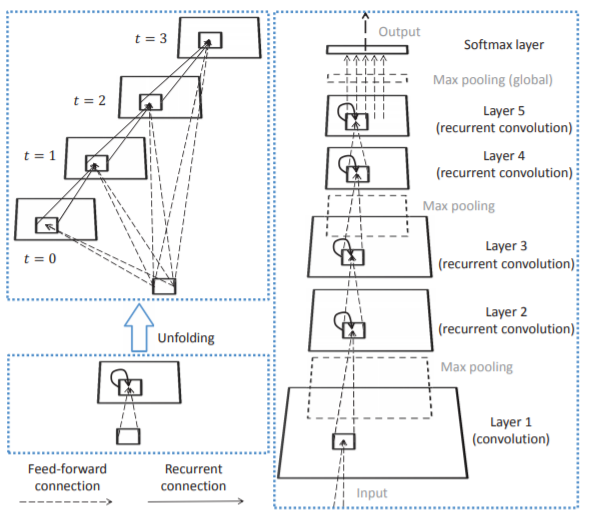In recent years, the convolutional neural network (CNN) has achieved great success in many computer vision tasks. Partially inspired by neuroscience, CNN shares many properties with the visual system of the brain. A prominent difference is that CNN is typically a feed-forward architecture while in the visual system recurrent connections are abundant. Inspired by this fact, we propose a recurrent CNN (RCNN) for object recognition by incorporating recurrent connections into each convolutional layer. Though the input is static, the activities of RCNN units evolve over time so that the activity of each unit is modulated by the activities of its neighboring units. This property enhances the ability of the model to integrate the context information, which is important for object recognition. Like other recurrent neural networks, unfolding the RCNN through time can result in an arbitrarily deep network with a fixed number of parameters. Furthermore, the unfolded network has multiple paths, which can facilitate the learning process. The model is tested on four benchmark object recognition datasets: CIFAR-10, CIFAR-100, MNIST and SVHN. With fewer trainable parameters, RCNN outperforms the state-of-the-art models on all of these datasets. Increasing the number of parameters leads to even better performance. These results demonstrate the advantage of the recurrent structure over purely feed-forward structure for object recognition.
The link to the paper: ieeexplore.ieee.org/document/7298958
You may find it in Google Scholar 🙂

